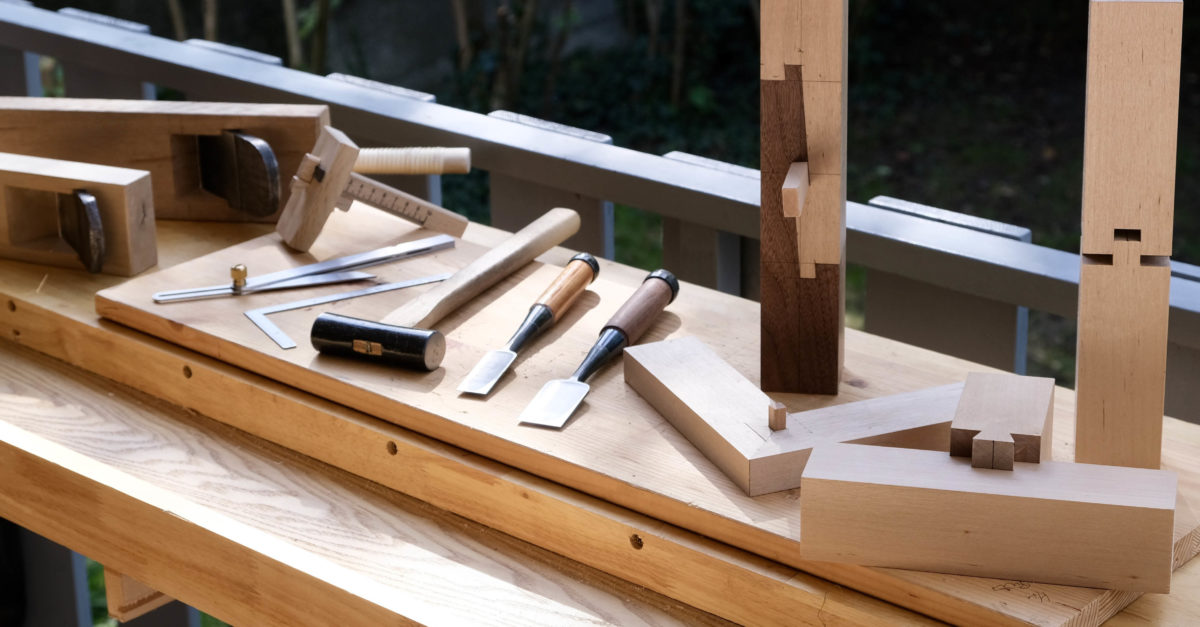Carving Out a Calling
Photography by Florida School of Woodwork
The timeless craft of woodworking has experienced an uptick in interest recently. Kate Swann, the founder and director of the Florida School of Woodwork, discusses her school and her vocation.

How did you pick up woodworking?
I used to watch my dad making stuff in the garage. However, it didn’t all come together until I was living in Portland, Oregon, where my former husband and I owned an early twentieth-century house. It was beautiful but it was a money pit; I had a project every weekend. I found that I really enjoyed using the tools for these projects, so I did Oregon College of Art and Craft’s evening program for about four years and started making things. When people started asking if they could buy my crafts, I knew it could be a business. After we moved to Tampa, I opened up my first little workshop in my garage, where I made custom, commissioned furniture for customers who became like family.
What was the impetus for opening your school?
After I’d been making pieces for a while, I started to build a reputation. One day, somebody asked, “Could you teach me how to do that?” I taught a few lessons and really enjoyed it. Within three or four years, I was teaching individuals and groups of two or three. When we moved into our current space, it gave me the chance to evolve and expand the teaching opportunities. It had reached the point where I couldn’t be a furniture maker and run a school at the same time, and there were enough students that it became viable to focus on the school.

How much has the school grown? What’s your mission for it?
The school has grown significantly. There are around 150 classes scheduled this year. They range from one day to our weeks, and we will welcome around 1,000 students. We have national and international instructors, as well as students from all over the country. The most important thing for me is that I learned so much during my time as a full-time commissioned maker, so I feel like I have a responsibility to be a good steward of my craft and help people start on this lifelong journey of woodworking.
What challenges did COVID-19 present for you?
Starting in March of 2020, I closed the school for three months and figured, “It’s been fun.” But then I took a leap of faith and started doing some Zoom classes. After all, how can you teach something that’s a very hands-on, interactive experience via a computer? As it turns out, fabulously! We put kits together and sent them to the students, and then the students followed virtually.
I’m definitely going to continue online classes. There are people who could never get to Florida or wouldn’t be able to take time off from work to do this, but they can do it from home. This has really broadened our reach, especially internationally—we’ve had students from places like France, Australia, Israel, and Poland. It’s been wild. And funny, too. We’ll see people in their pajamas. We had one guy sitting in his car for an entire class. When I asked him about it, he said that his car was the only place he could find a few moments of peace from his kids. [Laughs] So there is an audience out there, and it’s been really wonderful to increase the reach of this community of woodworkers all coming together in different ways.

Do you get a wide array of students?
As a societal observation, woodworking has historically been the domain of white guys over fifty—and I love white guys over fifty, don’t get me wrong—but because we are an urban school, our demographics don’t match that. Our breakdown is about 40 percent women and 60 percent men, and we have a broad range of ethnicities in our classes. Our average age is about forty, but, in any class, you’ll find a twenty-year-old and a seventy-year-old.
As far as different skill levels, some experienced woodworkers want to work with our masters, but a lot of people are beginners. In fact, we can’t offer enough Beginning Woodwork classes—each class has a waitlist of ten to fifteen people. I think it’s a life inflection point of sorts for a lot of people who want something they can engage in, do at home, and find some pleasure doing. There seems to be more interest now than there’s ever been.
Is woodworking an easy skill to pick up?
It’s like cooking: people can cook if they learn the sequences and manage their tools. So, even if they have no experience and may choose never to go on to more complex woodworking skills, they can learn to make simple things and enjoy that process. We want them to learn how to use machinery well and safely before they give it a shot in their garage.
Considering your medium and materials, is being eco-friendly a priority?
We do everything we can from an environmental standpoint. For example, we only use US-produced or US-grown hardwoods to ensure controls on the forestry and the way the wood is harvested. We also produce a lot of offcuts from different projects, which we reuse in our intro chopping board classes, and use a lot of donated wood rather than going out and driving the harvesting of new stock. In addition, for the safety of our students and the environment, all the finishing products we use are completely nontoxic.

Can you explain the magic of creating something with your hands?
A long time ago, I made a chopping board for my sister. There was nothing special about it. Several years later, I visited my family in England, and the chopping board was sitting unused on the windowsill! I asked her about it, and she simply replied, “You made
it for me.” There is something about made things that carries the spirit of the maker with them. When you create something with your hands, you are not just doing the physical craft—you’re pouring your thought, care, and love of the craft into it, which is incredibly satisfying. There’s a real thrill in creating something out of something else.
Do you feel the same when you see your students completing woodworking projects?
I live vicariously through them now. Something that I didn’t anticipate, though, was that so many students would find the path so enthralling that they would switch their lives entirely and become full-time makers. To see people embracing this profession and know that I’ve been a good steward of my craft is probably the most rewarding part of all this.
For more info, visit schoolofwoodwork.com























